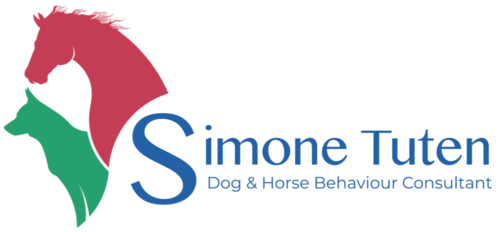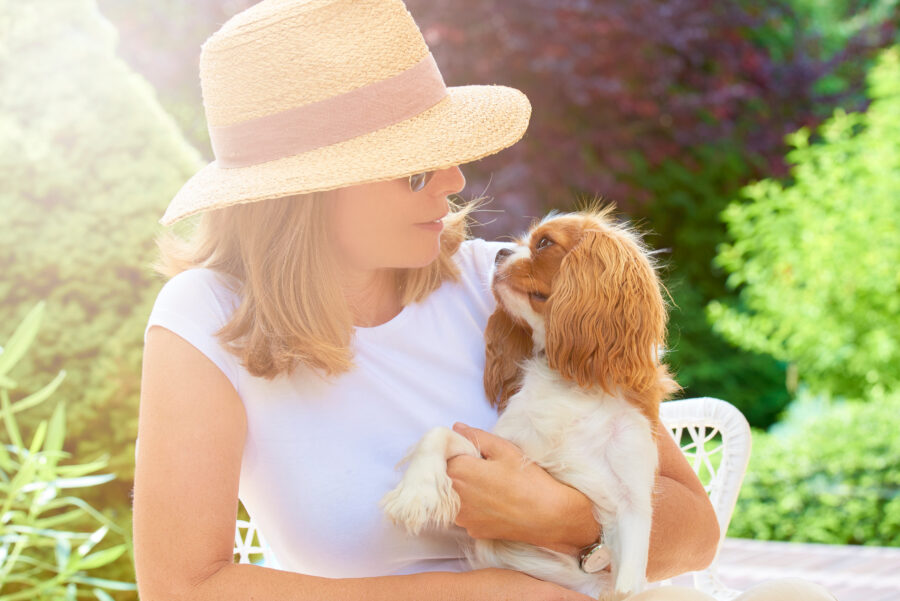We all want to give our dog a better life. Dogs are a part of our family; we have deep connection with them and want to do what’s best for them. So how do we give our dogs the best life?
Here are my top tips for a happy dog living their best lives with you.
Number 1 – each dog is an individual
This is probably the most important tip. Get to know your canine family member’s likes and dislikes, and what they need to keep them happy and healthy. Recognise what they enjoy and fill their lives as much as possible with these good things.
Number 2 – nutrition and feeding
When I was learning how to care for horses I was repeatedly told that each horse is an individual. That individuality meant that each horse needed a tailored diet and feeding regimes as well as other health care.
This also applies to dogs (and us). Do some research and talk to professionals you trust about what and how to feed your canine friend. I have a tip below about building a team of experts to support you and your canine friend.
Regardless of what your dog’s ideal diet is, we can present their meals in a variety of ways. Variety is the spice of life. And that’s true for most dogs when it comes to meeting and satisfying their nutritional needs and feeding behaviours.
Did you know that many individuals prefer to ‘work’ for their food? By work I mean engaging in natural behaviours and problem solving to access the food. This is called contra-freeloading. Let’s meet this need and preference by using food-based enrichment activities to feed meals.
Let’s give your dog a better life by optimising what and how we feed their meals and treats.
Number 3 – it takes a village
One of the best things you can do to help your dog live their best life is to find a team of specialists to help.
This team may include a
- regular general practice veterinarian,
- specialist veterinarians (e.g., holistic vets, behaviour vets, orthopaedic vets, rehabilitation vets etc) and
- other professionals like physiotherapists, canine nutritionists, massage therapists, other body work modalities, groomers and of course behaviour consultants (like myself).
Look for specialists that support you and your dog in a force free positive way. Ask questions but also follow your gut. If something doesn’t feel right, that person/modality may not be the best fit at this time.
What questions to ask?
I like to ask questions about
- their qualifications,
- experience,
- membership to associations,
- how they keep themselves up to date in their field of specialty,
- how they identify when a situation or case is currently beyond their scope of expertise and
- if/how/who they refer to in those situations.
I also like to check what was involved in gaining their qualifications. Look at both theory and practical requirements. I also check the membership criteria and ethics of the associations they are members of.
Number 4 – a better life through play
Play is important for many reasons, including social bonds, development of social behaviours, cognitive development, and physical development. Individualised play is an essential part of giving a dog their best life.
There are several definitions of play in science but one that I recently came across and like was proposed by Gordon Burghardt. Professor Burghardt is a professor in the Departments of Psychology, Ecology and Evolutionary Biology at the University of Tennessee, Knoxville. His definition of play essentially has 3 components:
- Play is something they do voluntarily over and over again, and
- They do it when not stressed, and
- It’s somehow different than a more serious version of that behaviour
To give your dog a better life, set things up so they have more opportunities to play. That includes playing with you, playing alone and possibly playing with other dogs or animals.
How to play with your dog?
Remember each dog is an individual and may play differently with different people or play differently from another dog. They have their preferences just like we do.
Try to encourage a game of tug (I’m a huge fan of playing tug with a dog), a game of chase, or bouncing around together. I’m sure you and your canine friend will develop your own unique games.
How to encourage your dog to play alone?
If your canine friend is interested in toys, then I verbally praise them when they go to and interact with a toy. You can keep toys interesting by rotating the toys. Keep a few toys out and available for your canine friend to play with for 3- 7 days. When they stop playing with the toys it’s time to change the toys. Put those toys away and replace them with ‘new’ toys.
Playing with other dogs
For dogs that enjoy the playing with other dogs arrange a walk and play date. Look for a dog with a similar play style. Dogs, like us, have preferences on how they like to play. Some dogs are active players and like body contact play. Others like to play by bouncing around and not making a lot of physical contact, some like chase games. Try to pair up compatible players.
These play sessions can be short – think minutes rather than hours. When dogs get overtired, overstimulated or overexcited play may deteriorate.
Become proficient in dog body language and play style and monitor the play to ensure both dogs are having fun.
Number 5 – teach your dog new skills aka training
A dog that responds to cues well (especially recall/come when called, walking on a loose lead, stay/wait) can have more freedom, more adventures with their human family and have a higher quality of life.
When we go beyond the basics and teach our canine friend skills to help keep them healthy, we can really reduce stress for the dogs in our care. For example, we can teach a dog to stand still for grooming, for ear care, wiping feet etc.
Even better we can work as a team with our canine friends. We can teach them to actively participate and co-operate with this care. For example giving paws for unrestrained nail care, voluntarily jumping into a bath, letting us know when they are ready for the ear drops etc. Here’s an example of co-operative care with a tiger at Copenhagen Zoo
When teaching new skills force free positive reinforcement methods are best. These techniques are low stress, will help develop a stronger bond between you and your dog, encourage trust and fun. Keep training fun and set up your canine friend for success.
There’s an added benefit to teaching dogs’ new skills and that is keeping their brains active. Learning can help with cognition as your dog ages, essential to give your dog a better life.
Number 6 – give your dog choices
Choice and control are important for animals (and us). Research on people and animals has demonstrated that having control is strongly related to positive feelings and mental wellness. Control is important, especially when it comes to things dogs don’t like e.g. nail clipping, grooming, reducing or overcoming fears.
Fortunately, there are simple ways we can enable dogs in our lives to have choice and control. We can modify our training environment and methods to enable a dog to walk away from a training session. We can give a dog choice in where to sleep, where to stop on walks, where to sniff and how long to sniff on walks, direction and speed of walks etc. Experiment with safe ways you can give your canine friend control and choice in their lives.
This is a nice article on the importance of choice and control and helping dogs live their best lives.
Number 7 – shared activities to give your dog a better life
If given the choice most of our canine friends would like to spend their day with us. How lovely is that?
I like to look for ways that I can include my canine family in my daily activities. For example, taking them with me while I feed the horses, do some gardening or check the mailbox etc.
It could also be as simple as sharing the couch watching tv or reading a book together.
For dogs that enjoy it explore new tracks together, go camping, go to dog friendly cafes, picnics, sporting events etc. Choose activities your canine friend enjoys. One of my previous kelpies enjoyed going canoeing with me.
I also like activities where we can work in partnership with our canine family. Where a dog’s senses and abilities are the main factor to success. For example dryland sledding, herding or using their amazing noses to find particular scents. Spending time together in shared activities is appreciated by most dogs.
Number 8 – help them overcome fears
Fears can be very debilitating and really impact upon quality of life. If our canine friend has fears that are not adaptive (a reasonable response to a threat) those fears and subsequent stress can have negative impacts on their mental and physical health.
Here is an overview of the impact of stress from the dvm360 website. “When stressors are unremitting and the stress response continues, virtually every system within the body can be pathologically affected to varying degrees-cardiovascular, metabolic, reproductive, gastrointestinal, immune, and integumentary. The results can include myopathy, fatigue, hypertension, decreased growth rates, gastrointestinal distress, and suppressed immune function, with subsequent impaired disease resistance. Chronic stress can even lead to structural and functional changes in the brain, and, when extreme conditions persist, permanent damage can result.”
One thing we can do to give the dogs in our care the best life possible is to reduce stress. One way is to help them overcome or at least lessen their level of fear.
Helping a dog overcome their fear is best done under the guidance of a behaviour modification specialist (like me). But it may include other professionals like behaviour veterinarians and holistic practitioners. The approach taken to help a fearful dog needs to be very kind, patient and sensitive to the dog’s emotions.
Number 9 – Exercise and activities
Remember the first point – that each dog is an individual? That also applies to designing exercise plans and activities for the dogs in our care to participate in.
If your canine friend doesn’t enjoy other dogs look for solitary activities like hiring a swimming pool or private exercise facility rather than heading down to the beach or local park.
Keep in mind how much exercise dogs need to keep healthy. This varies with age. To read more about this check out my blog post How much exercise does your dog need?
Not sure what sport to try?
A good starting place is to think about your canine friend’s breed(s) and what that breed was developed to do.
Domesticated breeds were selected for particular characteristics they excel in. For example, Siberian Huskies were selectively bred for their ability to run and pull sleds (fast). While Australian Kelpies were selectively bred for their ability to work other animals.
Research the breed(s) and use that information to help you decide which activities you may like to offer your dog.
The huskies that have been in my life really enjoyed dryland dogsledding and cani-cross – sports where they can run fast alone or in a team. One even loved agility (and was faster than the kelpie in my life at the time).
The kelpies in my life have enjoyed many activities (and some even learned to run in harness with the huskies). They excelled at being around the horses, being farm dogs, doing cani-cross, learning tricks and obedience.
Before starting a new sport or activity I recommend seeing a veterinarian to make sure your canine friend is healthy enough for the activity. Also see a physiotherapist to help you develop a tailored conditioning program for your canine friend.
Whichever exercise or activity you choose to try, monitor your canine friend to check they are having fun. Start slow and develop speed later.
Once your canine friend is getting into the sport/activity you may need help from nutritionists, massage therapists/other body workers etc. You may also need to see specialists to help with your fitness and skills so you can support your dog.
Number 10 – equipment
The equipment we use for walking and sports can have a huge impact on the dog living their best lives. We need to ensure that the equipment fits well and does not cause pain/discomfort or impact upon their movement.
Avoid equipment that is designed to stop something like barking or pulling on a lead. Chances are high that those products cause fear, pain or discomfort to a dog.
Flat collars have a bad reputation; but these collars have the least impact upon a dog’s movement, if they have been taught from a young age not to pull on a lead. Flat collars are also comfortable for dogs to wear.
Avoid shock/vibration/static, prong, choke and slip collars/leads these work by causing pain/discomfort.
For dogs that pull on lead, a harness may be the best choice. Choose a harness designed to be least restrictive to a dog’s movement. That means a correctly fitted Y front harness like the Perfect Fit or Haqhiana.
Avoid harnesses that tighten on a dog or have a strap going horizontally across a dog’s chest. These harnesses cause pain/discomfort and restrict a dog’s movement.
There’s a lot more I could say about equipment but I think that will be a topic for the future.
Are you set to give your dog a better life?
Remember each dog is an individual. Their best life will likely look different to the best life of another dog.
I hope these 10 tips help you give your dog their best life. I’m curious what was your favourite tip to give your dog a better life? Which tip will you focus on?




